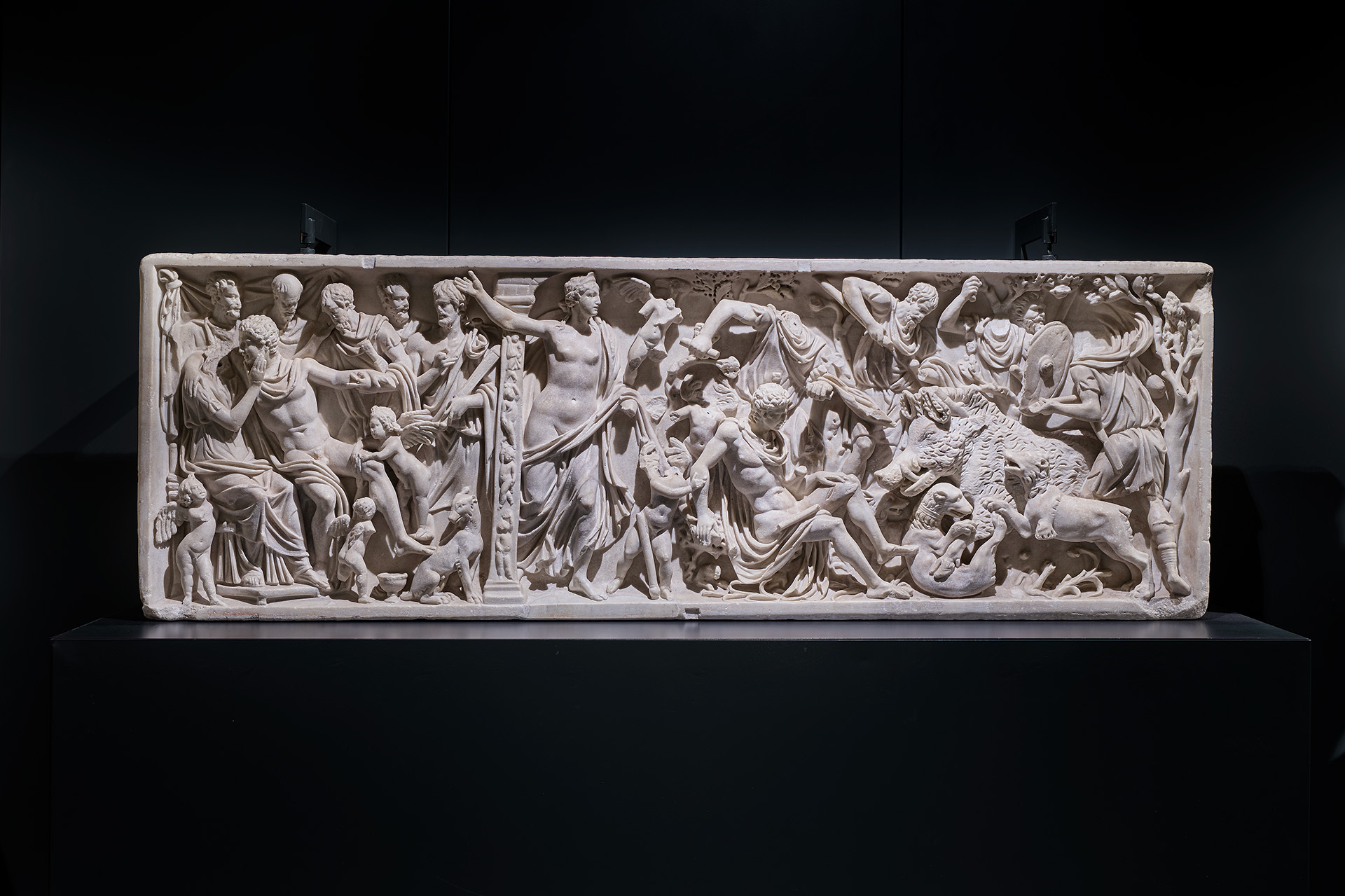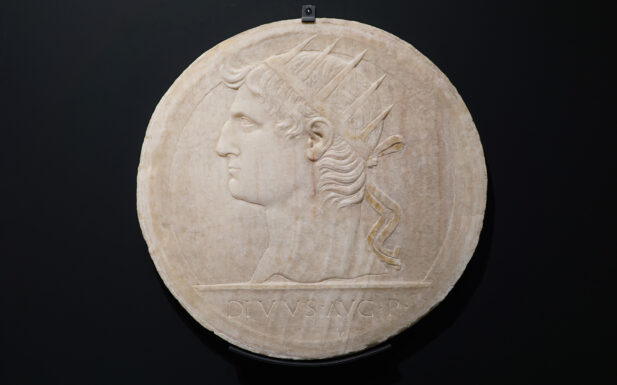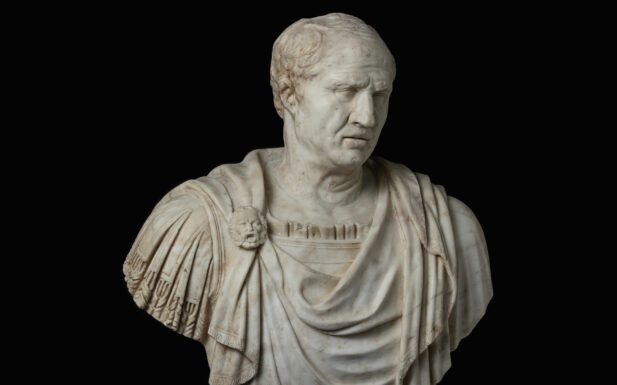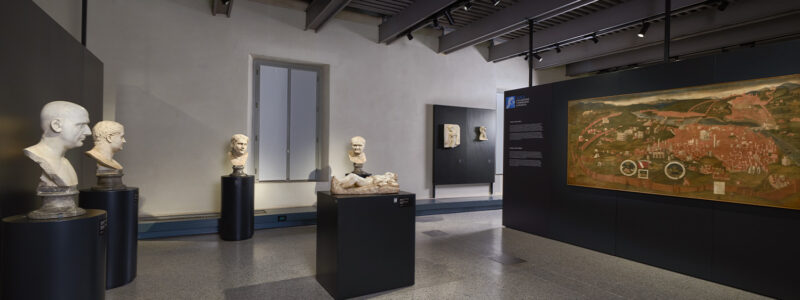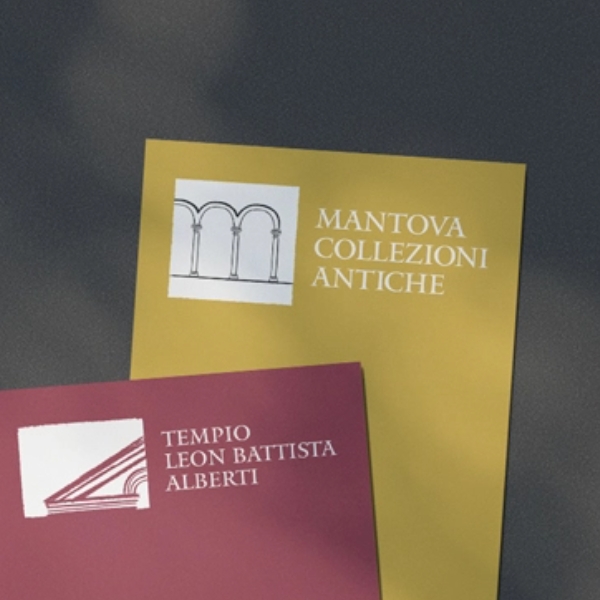This sarcophagus front comes from Sabbioneta, where it was part of the important antiquarian collection collected by Duke Vespasiano Gonzaga and was transferred to Mantua in 1774 to enrich the museum of the new Academy of Fine Arts. The marble can be dated to the end of the 2nd century AD, thanks to several comparisons with works from that period.
The relief shows the epilogue of the myth. On the right we see Adonis being wounded, while the boar is attacked by the hunter’s companions. Adonis is semi-reclining and from the left comes Venus in despair, her arm raised. Behind the goddess is a pillar, decorated with four figures of genii of the seasons, dividing the two scenes. On the left Adonis sits with his injured leg raised, while a cupid tries to bandage him up. The young hunter looks at Venus who is caressing him and in the background one can see the hunter’s companions.
The myth of Adonis is frequent on Roman sarcophagi, as a symbol of the eternal return of nature. Adonis spent the winter months with Proserpina, mistress of the Underworld; but then he ‘rose again’, returning to earth in the spring and summer months, which he spent with Venus. This alternation also symbolised the seasonal cycles.
Before arriving in Sabbioneta, the slab was in Rome, in the Quirinal area, at Andrea Bregno’s workshop, as witnessed by the note legible in Amico Aspertini’s drawing in the Wolfegg codex (“andare in monte chavallo in chasa de maestro andrea scarpelino”). The relief was copied several times between the 15th and 16th centuries, and details of the sarcophagus were taken up by Titian, in the Maddalena della Pietà in the Gallerie dell’Accademia, and by Giovanni Maria Falconetto, in the Sala dello Zodiaco in the Palazzo d’Arco in Mantua.
2nd century A.D.
Parian marble

